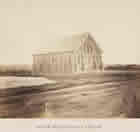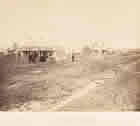After rich gold-bearing quartz lodes were found in the bedrock under the buried streams of the Ballarat plateau in 1856, a new settlement, mainly of Cornish and Welsh miners, developed. Located on the Yarrowee Creek, Sebastopol grew rapidly in the late 1850s and was proclaimed a town in 1864. Over time, its most successful gold mine was the Star of the East Company which worked three parallel lodes from three separate shafts. Sebastopol’s population rose from 2,149 in 1857 to 6,496 in 1871. It is now part of the City of Ballarat.
Multimedia Content
Sebastapol, VIC
- References
- Bate, Weston, Lucky city: the first generation at Ballarat, 1851-1901, Melbourne University Press, Carlton South, 1978. Details
- Stacpoole, H.J., Gold at Ballarat, Lowden Publishing Co, Kilmore, 1971. Details
- Watson, A.B., The lost & almost forgotten towns of colonial Victoria, A.B. Watson, 2003. Details



